The 1924 World Flight, also known as the First Aerial Circumnavigation of the Globe, was a pioneering aviation endeavor undertaken by the United States Army Air Service. The flight began and ended in Seattle, Washington, with four Douglas World Cruiser biplanes sponsored by different American cities. Here are the details for each plane and its crew:
Seattle
- Pilot: Major Frederick L. Martin
- Mechanic: Sergeant Alva L. Harvey
- Plane: Douglas World Cruiser “Seattle”
- Noteworthy: The “Seattle” crashed into a mountainside in Alaska on April 30, 1924, just 24 days into the journey. Martin and Harvey survived for 10 days in the wilderness before being rescued, ending their participation in the circumnavigation attempt.

Chicago
- Pilot: 1st Lt. Lowell H. Smith
- Mechanic: 1st Lt. Leslie P. Arnold
- Plane: Douglas World Cruiser “Chicago”
- Noteworthy: After the “Seattle” crashed, the “Chicago” assumed the lead role and completed the entire circumnavigation, returning to Seattle on September 28, 1924.

Boston
- Pilot: 1st Lt. Leigh Wade
- Mechanic: Sgt. Henry H. Ogden
- Plane: Douglas World Cruiser “Boston”
- Noteworthy: The “Boston” was forced to ditch in the Atlantic Ocean near the Faroe Islands due to engine failure. Wade and Ogden were rescued, but the plane sank and could not complete the journey.

New Orleans
- Pilot: 2nd Lt. Erik H. Nelson
- Mechanic: Sgt. John Harding Jr.
- Plane: Douglas World Cruiser “New Orleans”
- Noteworthy: The “New Orleans” completed the entire circumnavigation along with the “Chicago”, returning to Seattle on September 28, 1924.
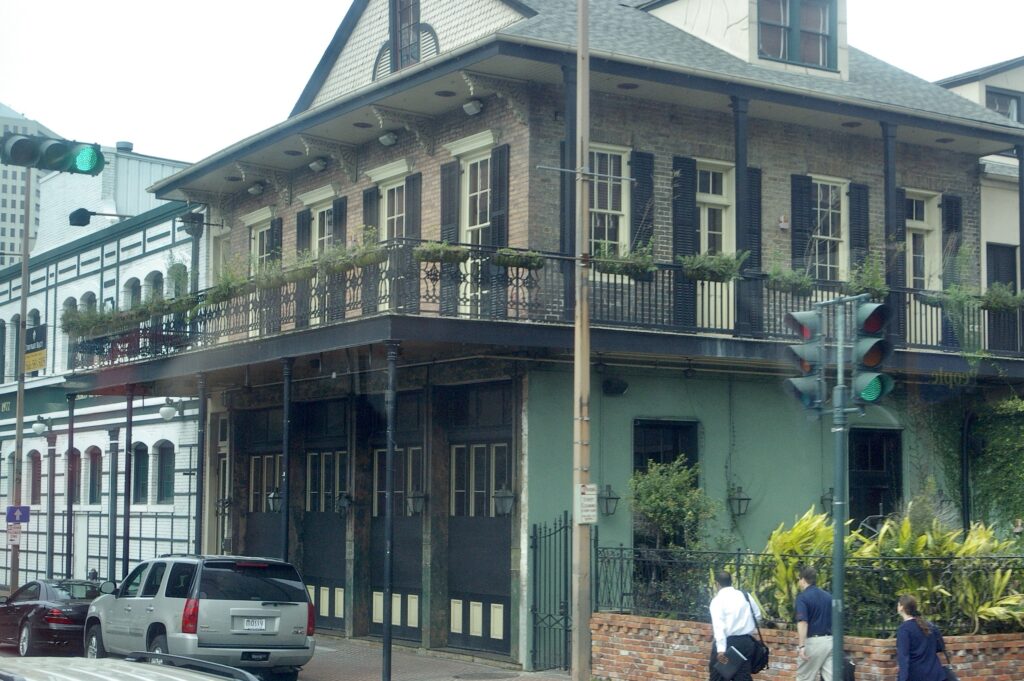
The flight took 175 days and covered over 26,000 miles, making it a monumental achievement in aviation history at the time and 2024 is the 100 year anniversary The crews faced numerous challenges, including harsh weather conditions, mechanical issues, and navigational difficulties, but their perseverance and skill allowed them to become the first aviators to circumnavigate the globe by air.
[9] The First Around-The-World Flight Started in Seattle – YouTube https://www.youtube.com/watch?v=NBzeCKoO4wY


The Planes
A total of five Douglas World Cruiser aircraft were built. Here are the details:
- Prototype: One aircraft was built as a prototype for testing and training purposes.
- Expedition Aircraft: Four additional aircraft were built specifically for the 1924 World Flight expedition.
These aircraft were developed from the Douglas DT torpedo bomber and were modified to meet the requirements of the U.S. Army Air Service for the first aerial circumnavigation of the globe. They were built in San Diego.
The modifications included increased fuel capacity, interchangeable landing gear (wheels and pontoons), and other enhancements to improve range and durability. The floatplane pontoons were built by Bill Boeing’s new airplane company using skills honed from Pocock rowing shell builds prior to WW1. The Potoons were mounted after the planes had been flown to Seattle.

Based on the search results, no original Douglas DT torpedo bombers are known to exist today. The Douglas DT series, which included the DT-1 and DT-2 models, was an early torpedo bomber used by the U.S. Navy and Marine Corps in the 1920s. Here are some key points about the Douglas DT series and its historical context:
- Introduction: The Douglas DT-1 first appeared in 1921 as a single-seat torpedo plane powered by a 400-horsepower Liberty engine. It could be fitted with either wheels or twin floats for carrier or water operations.
- Development: The DT-2 was a two-seat version with an observer/gunner position, and it became the primary model used by the Navy and Marine Corps.
- Service: The DT series had a relatively brief service career, with the last experimental DT-6 being discarded in January 1927. The DT-2B series served with the Norwegian Naval Flying Service until 1940.

According to the search results, a total of approximately 80 Douglas DT-2-type aircraft were produced in the United States. Here are the details:
- Douglas DT-1: The initial prototype and single-seat version.
- Douglas DT-2: The primary production model, a two-seat torpedo bomber.
Production Breakdown:
- Douglas Aircraft Company: Built 41 DT-2 aircraft.
- Naval Aircraft Factory: Built 6 DT-2 and DT-4 aircraft.
- Dayton-Wright Company: Built 11 DT-2 aircraft.
- LWF (Lowe, Willard, and Fowler): Built additional DT-2 aircraft.
Additional Information:
- Export Models: Five DT-2 aircraft were delivered to Norway and Peru.
- Licensed Production: Seven DT-2 aircraft were built in Norway under license.
The TBD Devastators entered service in 1937, retired from active service in 1942 and completely by 1944. These were the most advanced aircraft for the Navy upon introduction but became outdated by the time of the attack on Pearl Harbor. They Performed well in the Battle of Coral Sea but had catastrophic performance at the Battle of Midway with 41 Devastators and zero torpedo hits.
The DT series was significant as it laid the groundwork for future Douglas aircraft, including the Douglas World Cruiser, which was a modified version of the DT for the first aerial circumnavigation of the globe in 1924.
Seattle’s Role
Seattle played a pivotal role in the success of the 1924 World Flight, which was the first aerial circumnavigation of the globe. Here are the key details about Seattle’s involvement:
Seattle Crew

- The “Seattle” Douglas World Cruiser was piloted by Major Frederick L. Martin, who was designated the overall flight commander. His mechanic was Sergeant Alva L. Harvey.
- Though the “Seattle” crashed in Alaska just 24 days into the journey, Martin and Harvey survived for 10 days before being rescued, showcasing the dangers faced.
Logistical Support
Starting Point
- Seattle served as the staging ground where the planes were outfitted with pontoons for water landings and supplied for the circumnavigation attempt.
- Caches of spare parts, engines, and fuel were pre-positioned globally, with the planning and coordination centered in Seattle.

Involvement of the Seattle Yacht Club in the 1924 World Flight
The Seattle Yacht Club (SYC) played a significant role in the 1924 World Flight, particularly in terms of providing support and hosting events related to the historic journey.
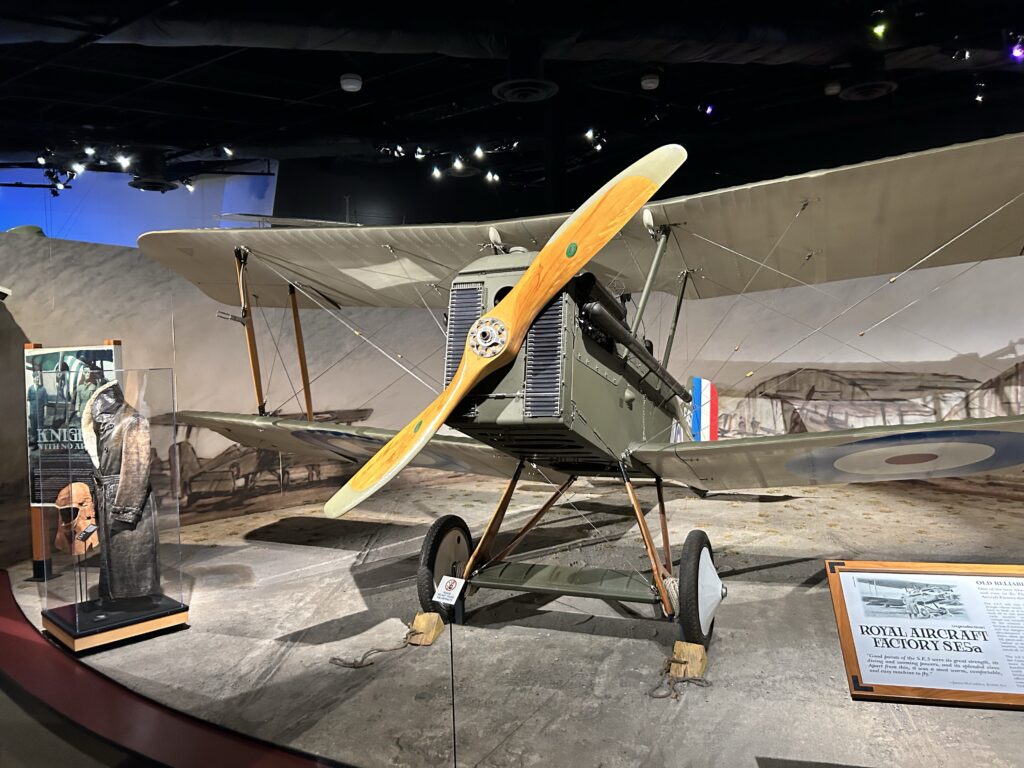
Here are the key points:
- Support and Hosting:
- The SYC was involved in hosting dignitaries and events related to the World Flight. The club’s facilities and resources were utilized to support the aviators and their mission.
- Honorary Memberships:
- During the World Flight Day, military commanders were made honorary members of the Seattle Yacht Club. This was a gesture of goodwill and recognition of their achievements.
- Boeing
- Photograph of the “City of New Orleans”:
- In the 1968 the Seattle Yacht Club received a photograph of the “City of New Orleans” plane from its pilot. This was a token of appreciation and a way to commemorate the club’s involvement in the historic flight.
- Greeting Dignitaries:
- Dignitaries were greeted at a floating home moored at the Seattle Yacht Club during World Flight Day. This floating home served as a unique and picturesque venue for welcoming guests and celebrating the event. The platform (logs) used during the World Flight Day to greet dignitaries at the floating home moored at the Seattle Yacht Club still exists today. This historical artifact as well as the recently renovated Yacht Club itself serve as reminders of the club’s involvement in the 1924 World Flight.

“When those Tripes want to go up they go up, and leave us down below as if we had anchors on our tails.”
from the diary of an unknown British pilot
Summary
- The flight began and ended in Seattle at Sand Point Naval Air Station (now Magnuson Park) on the shores of Lake Washington.
- On April 6, 1924, four Douglas World Cruiser biplanes named the Seattle, Chicago, Boston, and New Orleans took off from Sand Point to begin the historic journey.
1924 AROUND THE WORLD FLIGHT
On April 6, 1924, four specially built U.S. Army airplanes known as Douglas World Cruisers departed from Sand Point Aviation Field in Seattle in an attempt to be the first to circumnavigate the earth by air.
The four pilots-Major Frederick Martin in the Seattle, Lieutenant Lowell Smith in the Chicago, Lieutenant Leigh Wade in the Boston and Lieutenant Erik H. Nelson in the New Orleans-had every confidence in the quality of their aircraft and in the planning of the expedition, which had been conducted by Major General Mason Patrick, Chief of the U.S. Army Air Service. On September 28, 175 days and 27,553 miles later, two of the planes returned with their two-man crews and landed side by side at Sand Point-mission accomplished.
The planes were first flown from California to Seattle, where ground crews installed pontoons. The Seattle dropped out early with engine problems and later crashed in Alaska on its way to the Aleutian Islands. The three remaining aircraft continued without serious incident to Japan, across the Indian subcontinent and over the Balkan Penninsula to France. In Paris, they were greeted by cheering crowds on Bastille Day, July 14.
Leaving Britain to cross the Atlantic Ocean, Wade encountered mechanical problems and landed the Boston in the ocean near a U.S.
Navy ship. Unfortunately, the Boston suffered extensive damage during retrieval attempts and had to be abandoned. Once again in the U.S., the Chicago and the New Orleans were joined by the back-up plane, the Boston II, for a tour of the U.S. and a triumphant welcome at Sand Point.
The Museum of Flight
Triumphant Return

- After 175 days and over 26,000 miles, the remaining two planes (“Chicago” and “New Orleans”) returned triumphantly to Seattle on September 28, 1924, greeted by a crowd of 50,000 people.
- The successful mission launched Seattle and the U.S. to the forefront of the aviation world at the time.
So in summary, serving as the ambitious expedition’s launch and return site, providing key personnel, and orchestrating the global logistical efforts, Seattle was instrumental to the historic first aerial circumnavigation of the globe in 1924.

Sand Point Naval Station Role
Circumnavigation

Sand Point Naval Air Station (now Magnuson Park) in Seattle played several key roles that contributed to the success of the 1924 World Flight – the first aerial circumnavigation of the globe.
Starting Point

The planes were outfitted and supplied at Sand Point for the global circumnavigation attempt. 100 years ago: 1st round-the-world flight takes off from Seattle
Logistical Support
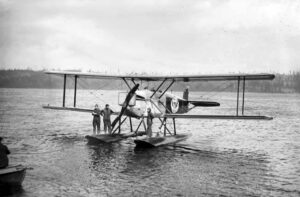
Commemorative Site

A concrete pillar with bird wings at the top and a plaque was erected at the entrance to the former Sand Point Naval Air Station (7400 Sand Point Way) to commemorate the historic first round-the-world flight that began there.
Public Fanfare

Upon the triumphant return of the remaining two planes on September 28, 1924 after 175 days, Sand Point was the site of a massive public celebration.
Birdmen

So in essence, Sand Point provided the vital starting location, logistical staging, commemorative monument, and celebratory homecoming for this pioneering aviation milestone that captured worldwide attention and acclaim when it was accomplished in 1924.
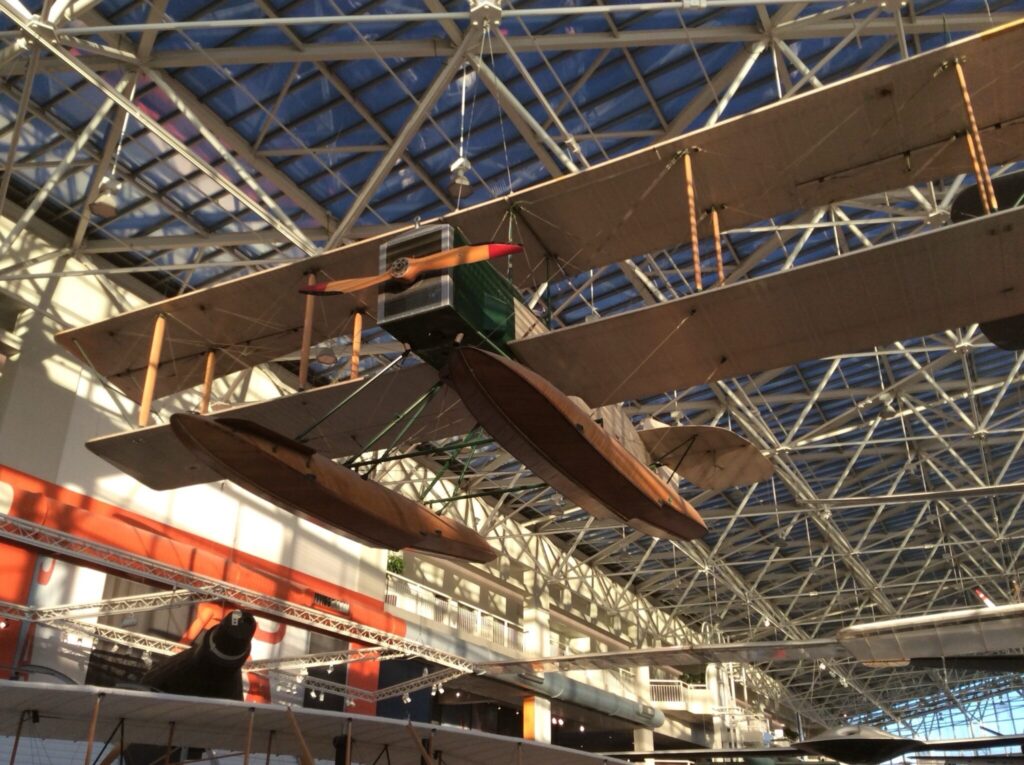
The B&W was Boeing’s first airplane. On June 15, 1916, the Seattle Post-Intelligencer reported that the “new hydroaeroplane” was piloted by William Boeing himself on its first flight. In hopes of a contract, Boeing showed the plane to the U.S. Navy but was turned down. The first B&W, nicknamed Bluebill, and the second, Mallard, were shipped to New Zealand. Used for airmail and military flights, the planes were reported to have been destroyed in 1924. William E. Boeing met a Navy engineer named Conrad Westervelt at Seattle’s University Club. They found they had similar interests-both bachelors liked boating and bridge, had studied engineering, and shared a fascination with the dawning field of aviation. On July 4, 1914, they arranged for their first flights in a Curtiss-type seaplane. Both men were impressed, but agreed that they could build a better airplane. The result was the B&W, named after the initials of its creators.
The search results provide some key details about the specific facilities and role of Sand Point Naval Air Station (now Magnuson Park) in supporting the 1924 World Flight:
- Launch Site
Sand Point Airfield served as the official starting point for the four Douglas World Cruiser biplanes that took off on April 6, 1924 to begin their historic circumnavigation attempt. - Outfitting and Supplies
The planes were outfitted with enlarged fuel tanks, pontoons for water landings, and supplied with provisions at Sand Point prior to their departure. Caches of spare parts, engines and fuel were pre-positioned globally, with much of the planning and coordination centered at Sand Point. - Commemorative Monument
A concrete pillar with bird wings and a plaque was later erected at the entrance to Sand Point to commemorate it as the launch and return site for the first aerial circumnavigation of the globe in 1924. - Public Celebration Site
Upon the triumphant return of the two remaining planes on September 28, 1924, Sand Point hosted a massive public celebration attended by an estimated 40,000-50,000 people who gathered to welcome the aviators back to Seattle after their 175-day journey. - Grass Runways
At the time, Sand Point had grass runways that the World Flight planes used for takeoff and landing. The runways were later paved in 1940-41 as the station expanded.
So in essence, Sand Point provided the vital facilities to launch, outfit, supply, commemorate and celebrate this pioneering aviation milestone before and after the grueling 6-month global journey. Its role as the ambitious expedition’s origin and return site was critical to the success of the first aerial circumnavigation.

World Flight Plane Supply Stops
Extensive planning went into pre-positioning supplies and support for the 1924 World Flight along its global route. Here are some key details about where the planes could stop for supplies:
- Caches of spare parts, replacement engines (35 were distributed), and thousands of gallons of fuel were pre-positioned at points around the world where the flight would cross over land
- McCook Field in Ohio served as the main logistics base, with subordinate depots located in each of the 7 divisions the route was divided into.
- The Fairfield Air Depot in Ohio was responsible for obtaining, packaging and shipping parts and supplies to the various airfields within each division
- On the seas, U.S. Navy cruisers, destroyers, and Coast Guard cutters were scheduled to be placed at strategic locations and preset times along the route to provide assistance if needed
- For example, when crossing the Atlantic, naval vessels like the USS Richmond were positioned to tow and attempt repairs on the Boston plane after it ditched in the ocean near the Faroe Islands
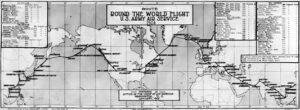
So through careful planning and coordination with the War Department, Navy, Coast Guard and other agencies, the Air Service ensured the World Flight planes had caches of critical supplies and repair facilities pre-staged along the entire 27,000+ mile circumnavigation route, both over land and sea. This logistical preparation was vital to sustaining the ambitious global journey.
Based on the search results, the main stops and supply depots for the 1924 World Flight planes were:
Key Stops
- Seattle, WA (Sand Point Naval Air Station) – Starting point
- Attu, Aleutian Islands
- Kagoshima, Japan
- Calcutta, India
- Constantinople (Istanbul), Turkey
- Paris, France on Bastille Day
- London, England
- Boston, MA
- Across the United States back to Seattle
The entire route was divided into 7 divisions, with major stops planned at the end of each division for refueling, repairs, and resupplying.
Logistics Bases
- McCook Field in Ohio served as the main logistics base, coordinating the global supply efforts.
- The Fairfield Air Depot in Ohio was responsible for obtaining, packaging and shipping spare parts, engines (35 were distributed), and thousands of gallons of fuel to the various airfields within each division.
- On the seas, U.S. Navy cruisers, destroyers, and Coast Guard cutters were pre-positioned at strategic locations along the route to provide assistance if needed, such as when the Boston plane ditched near the Faroe Islands.
The Algonquin’s support was crucial during the challenging Alaskan leg of the journey, where weather conditions were harsh and the terrain was unforgiving. The cutter’s presence and assistance helped ensure the safety and success of the World Flight in this critical early stage of the circumnavigation attempt.
So through extensive planning and coordination, the Air Service carefully selected key stopover points around the world and pre-positioned vital supplies, spare parts, fuel caches and repair facilities at those locations to support the pioneering global circumnavigation attempt.

Some of the most critical airfields and locations that enabled the success of the 1924 World Flight were:
Seattle (Sand Point Naval Air Station)

- Served as the official starting point where the four Douglas World Cruiser planes took off from on April 6, 1924 to begin the circumnavigation attempt.
- The planes were outfitted and supplied for the global journey at Sand Point prior to departure.
- Upon completing the circumnavigation on September 28, 1924, the two remaining planes returned triumphantly to Sand Point, greeted by a crowd of 50,000 people.
McCook Field, Ohio
- Functioned as the main logistics base, coordinating the global supply and support efforts for the World Flight.
- Subordinate supply depots were located within each of the 7 divisions the route was divided into.
Fairfield Air Depot, Ohio
- Responsible for obtaining, packaging and shipping the vital spare parts, engines (35 were distributed), and thousands of gallons of fuel to the various airfields along the route.

Key Stopover Airfields
Attu, Aleutian Islands, Attu is the westernmost point of the United States and Alaska. It’s located about 1,100 miles from the Alaskan mainland and only 208 miles from Russia’s Commander Islands. It’s one of the largest uninhabited islands in the United States, becoming uninhabited in 2010. Attu was invaded by Japanese forces in June 1942, marking the only occupation of U.S. soil during WWII. The Attu battlefield was designated a National

Kagoshima, Japan’s : Kagoshima is located on the southern tip of Kyushu island in Japan. Its position makes it a strategic point for flights crossing the Pacific. Today Kagoshima is known for its active volcano, Sakurajima, which has been erupting almost continuously since 1955. Kagoshima has historically been an important port city, which made it a useful location for supplying and supporting long-distance flights.

Calcutta, India Calcutta was a major city in British India and an important port. Its location in eastern India made it a strategic stopover point for flights crossing Asia. As a key city in British India, Calcutta had more advanced infrastructure compared to many other Asian cities at the time. The city’s Dum Dum Airport (now Netaji Subhas Chandra Bose International Airport) was one of India’s first airports, established in the 1920s. As one of the largest and most important cities in India at the time, a stop in Calcutta would have been noteworthy for the cultural and political significance of the city.

Constantinople (Istanbul), Turkey Constantinople, straddling Europe and Asia across the Bosphorus strait, was a crucial stopover point for the World Flight. Its position at the crossroads of two continents made it an ideal refueling and resupply location for the aviators. By 1924, the city had recently transitioned from being Constantinople, the capital of the Ottoman Empire, to Istanbul in the newly formed Turkish Republic (though the name Istanbul was not officially adopted until 1930). This political change would have been fresh and noteworthy for the World Flight crew. Given its size and importance, the arrival of the World Flight in Constantinople probably garnered significant public and media attention, both locally and internationally.

Paris France for Bastille Day
Here are the key points about Bastille Day and how it was celebrated in 1924:
- Bastille Day, celebrated on July 14th, is France’s national holiday. It commemorates the storming of the Bastille prison in Paris on July 14, 1789, which marked the beginning of the French Revolution.
- The holiday was officially established in 1880 and has been celebrated annually since then.
- In 1924, some notable aspects of Bastille Day celebrations included:
- The first Bastille Day Ball took place in 1924, which became an annual tradition thereafter.
- Celebrations typically included military parades, fireworks, concerts, and public festivities.
- The day was marked by expressions of French patriotism and unity.

In 1924, some notable aspects of Bastille Day celebrations included:
- A large military parade in Paris, possibly on the Champs-Élysées.
- Fireworks displays, especially in Paris and other major cities.
- Public gatherings and parties across France.
- The use of the slogan “Vive le 14 juillet!” (Long live the 14th of July!)
- The celebration was not limited to France. French communities and embassies around the world likely held events to mark the occasion.
- 1924 was also the year of the Paris Olympics, which may have added to the festive atmosphere in the capital, though the search results don’t explicitly connect the two events.
It’s worth noting that while the search results provide general information about Bastille Day celebrations, they don’t offer many specific details about the 1924 celebration. The introduction of the Bastille Day Ball that year seems to be the most notable addition to the traditional celebrations.
The 1924 World Flight did stop in Paris, arriving on July 14, 1924, which coincided with Bastille Day. This timing allowed the aviators to participate in the celebrations, and they received a warm welcome from French citizens and dignitaries.
Notable Aspects of the Paris Stop:
- Bastille Day Celebration: The arrival in Paris on such a significant national holiday enhanced the visibility of the flight and allowed the aviators to be part of the festivities.
- Public Reception: The pilots were celebrated for their achievement, marking an important moment in aviation history as they were the first to circumnavigate the globe by air.
- Cultural Significance: The stop in Paris was not only a logistical point but also a cultural one, showcasing international cooperation and interest in aviation.

The 1924 World Flight’s stop in Paris was notable for its timing with Bastille Day, leading to a celebratory reception. This event highlighted the significance of aviation during a period of rapid development and excitement about air travel, paralleling the spirit of the 1924 Olympics.
London, England London was a crucial stopover point for the World Flight, marking the transition from continental Europe to the challenging Atlantic crossing. As a major global city and the capital of the British Empire, London likely had more advanced aviation facilities compared to many previous stops, which would have been beneficial for servicing and resupplying the aircraft. The nWorld Flight team landed at Croydon, which was London’s main airport at the time. This was an important aviation hub in the 1920s. After London, the flight moved to Brough in Yorkshire, indicating that London was the last major city stop before the team prepared for the Atlantic crossing. As the capital of one of the world’s major powers, the stop in London likely involved diplomatic engagements and represented an important moment in U.S.-UK relations in the context of aviation advancement.

Boston, MA As a major city, Boston provided essential logistical support for the World Flight. This included refueling, maintenance, and any necessary repairs before the aircraft continued their journey across the United States. In the 1920s, Boston was a major cultural and economic hub in the United States. Hosting the World Flight would have been a point of pride for the city and contributed to the overall excitement and celebration of the event. Boston served as a preparation point for the final leg of the journey across the United States. The aircraft and crew would have made final checks and preparations before continuing to their ultimate destination in Seattle.

All six plus Seattle served as planned resupply, refueling and maintenance stops at the end of each division of the circumnavigation route. Additionally, U.S. Navy ships were pre-positioned at strategic locations over water to provide assistance if needed, such as when the Boston plane ditched near the Faroe Islands.

So through meticulous planning and logistical preparation centered on bases like McCook Field and Fairfield, the Air Service ensured the World Flight had a network of vital support facilities staged globally to enable this pioneering aviation achievement.
United States Army Air Service Role

The United States Army Air Service was the aerial warfare branch of the U.S. Army between 1918 and 1926, serving as a forerunner to the modern U.S. Air Force. Here are some key details about the Air Service and its activities in 1924:
- The Air Service was established in 1918 during World War I, replacing the Aviation Section of the Signal Corps as the nation’s air force. It became an independent combatant arm of the U.S. Army in 1920 under the National Defense Act.
- After WWI, the National Defense Act of 1920 gave the Air Service the status of a “combatant arm” of the Army with its own chief (a major general). This formalized the Air Service as a permanent establishment.
- In 1924, the Air Service undertook the first aerial circumnavigation of the globe, known as the World Flight. Four Douglas World Cruiser biplanes named Seattle, Chicago, Boston and New Orleans attempted the journey, with only two (Chicago and New Orleans) completing the full circumnavigation after 175 days and over 26,000 miles.
- The World Flight demonstrated the Air Service’s emphasis on developing long-range bombardment capabilities and testing the limits of aviation technology at the time. It was an immense logistical effort pre-positioning fuel, supplies and personnel globally.
- However, by 1924 the Air Service’s inventory still consisted primarily of observation aircraft (457 planes) rather than dedicated bombers (only 55). Its annual strength that year was around 10,488 personnel.
- The Air Service. participated in the 1924 International Air Races in Dayton, Ohio, with pilots competing in events testing speed, efficiency, altitude and other capabilities relevant to potential military applications.
- On July 2, 1926, the Air Service was re-designated as the United States Army Air Corps under the Air Corps Act. This act changed the name but also: Gave the Air Corps more autonomy over training, materiel, engineering and procurement of aircraft and established the position of Assistant Secretary of War for Air, though this was left vacant from 1932-1941.
- While the name changed to Air Corps in 1926, it remained a combatant arm and branch of the U.S. Army, with its role still oriented towards supporting ground forces according to Army doctrine at the time.
- The Air Corps continued to develop and expand through the 1930s, with advances like the B-17 bomber redefining the potential of airpower, though facing skepticism from some Army leaders.
- Finally, in June 1941 the Air Corps became the U.S. Army Air Forces (USAAF) as a step towards greater autonomy during World War II, before eventually becoming the U.S. Air Force in 1947.

So the Air Service was making strides in developing bombardment aviation in 1924 as demonstrated by the World Flight, its primary aircraft inventory and personnel were still oriented towards observation and support roles for the Army’s ground forces at that time. The circumnavigation attempt highlighted the Air Service’s ambitions but also the technological limitations it still faced. And the 1926 Air Corps Act transitioned the Air Service into the Air Corps branch within the Army structure, giving it more independence in certain areas, but it remained subordinate to the Army’s ground force priorities until the creation of the Army Air Forces in 1941 paved the way for an eventual independent air force.

US Military History of Aircraft
The United States military branches have a long and extensive history of operating aircraft to support their respective missions.

Here’s an overview of each branch’s involvement with aircraft:
U.S. Navy
The rescue of the Douglas World Cruiser Boston near the Faroe Islands during the 1924 World Flight involved USS Richmond (CL-9)

- Role: The USS Richmond, a U.S. Navy light cruiser, played a crucial role in the rescue operation.
- Actions: When the Boston was forced to make an emergency landing due to an oil leak, the accompanying Chicago dropped a note onto the USS Richmond, informing them of the situation. The crew of the Boston was subsequently rescued by the Richmond.
- Unfortunately, the Boston capsized and sank while being towed to the Faroes.

- The Navy purchased its first aircraft, the Curtiss A-1 Triad, in 1911, marking the beginning of naval aviation.
- During World War I, the Navy operated aircraft for patrol, reconnaissance, and anti-submarine warfare.
- Post-WWI, the Navy continued developing aircraft carriers and naval aviation capabilities, playing a crucial role in World War II battles in the Pacific.
- Today, the Navy operates a diverse fleet of fixed-wing and rotary-wing aircraft for missions like air superiority, strike, airborne early warning, anti-submarine warfare, and logistics support.
- Key aircraft include the F/A-18E/F Super Hornet, EA-18G Growler, E-2D Hawkeye, P-8A Poseidon, and various helicopters.
- As of 2022, the Navy had around 3,700 manned and unmanned aircraft in its inventory.

U.S. Coast Guard
Algonquin was a steel-hulled vessel equipped with a triple-expansion steam engine, Scotch boilers, and a single screw. She was one of the first RCS cutters (Revenue Cutter Ships) built with electric generators to supply current for lights and call bells.[5][6] She was one of the last RCS cutters that was rigged for sails and had a bow torpedo tube installed.[7][8]
The Coast Guard Cutter Algonquin played a significant supporting role in the 1924 World Flight, particularly during the Alaskan portion of the journey. Here are the key ways Algonquin supported the flight:
- Logistical Support: Algonquin provided parts, rest breaks, and meals for the aviators during their journey through Alaska.
- Companionship: The cutter’s crew offered fellowship to the aviators, particularly to Major Frederick L. Martin, the lead pilot of the Seattle aircraft.
- Engine Replacement: When the Seattle aircraft experienced engine trouble near Prince Rupert Island on April 15, Algonquin’s crew had a replacement engine ready and assisted with repairs.
- Search and Rescue: After the Seattle aircraft crashed near Port Moller on April 30, Algonquin’s crew was involved in the search for the downed plane and missing pilot.
- Ongoing Presence: Algonquin was on its annual Alaskan cruise from April through November 1924, which coincided with the World Flight, allowing it to provide continuous support in the region.
- Communication: The executive officer of Algonquin, Lt. William Pitts Wishaar, wrote letters describing the events of the World Flight, providing valuable historical documentation of the cutter’s involvement.
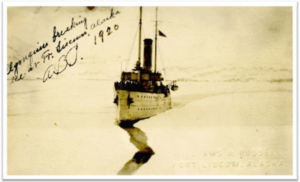
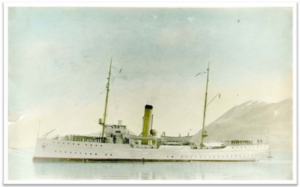







The Algonquin’s support was crucial during the challenging Alaskan leg of the journey, where weather conditions were harsh and the terrain was unforgiving. The cutter’s presence and assistance helped ensure the safety and success of the World Flight in this critical early stage of the circumnavigation attempt. She was decommissioned in 1930. And was a US Navy vessel during WWI before being turned over to the US Coast Guard. Here is a brief run down of the Coast Guard’s involvement with aircraft.
- The Coast Guard’s aviation branch dates back to 1916 when Congress authorized the establishment of 10 air stations along the coasts.
- In 1924, as mentioned above, the Coast Guard provided services for World Flight.
- During WWII, the Coast Guard operated Navy aircraft like the Grumman JF/J4F amphibians, Consolidated PBY flying boats, and Martin PBM Marlin flying boats for patrol, air-sea rescue, and other missions.
- Today, the Coast Guard operates around 200 aircraft, including the HC-130J Super Hercules for long-range maritime patrol, the MH-65 Dolphin helicopter for search and rescue, and the HC-144 Ocean Sentry for maritime surveillance.
- The Coast Guard’s aircraft are primarily used for search and rescue, maritime security, marine safety, and environmental protection missions.

U.S. Air Force
- The Air Force traces its roots to the U.S. Army Air Corps, which became the U.S. Army Air Forces in 1941 before becoming an independent service in 1947.
- The Air Force operates a wide range of aircraft for air superiority, global strike, intelligence, surveillance, reconnaissance, special operations, airlift, and other missions.
- Key aircraft include the F-22 Raptor, F-35 Lightning II, B-52 Stratofortress, B-1B Lancer, B-2 Spirit, C-17 Globemaster III, and various special operations aircraft.
- As of 2022, the Air Force had approximately 5,300 manned and unmanned aircraft in its inventory.
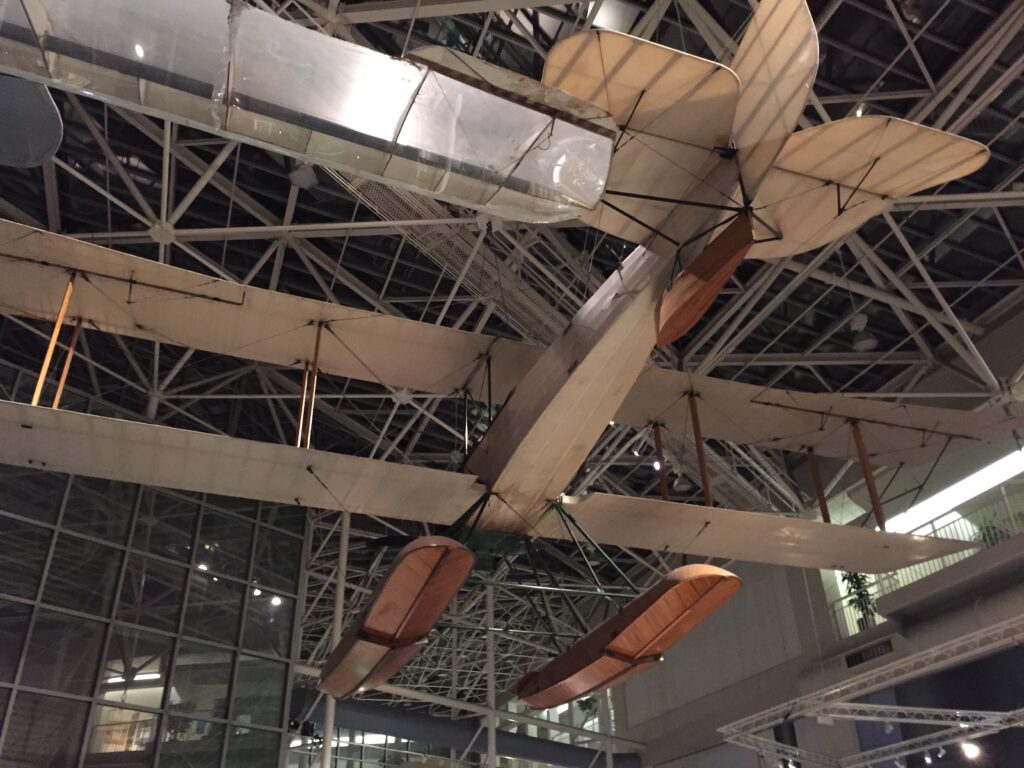




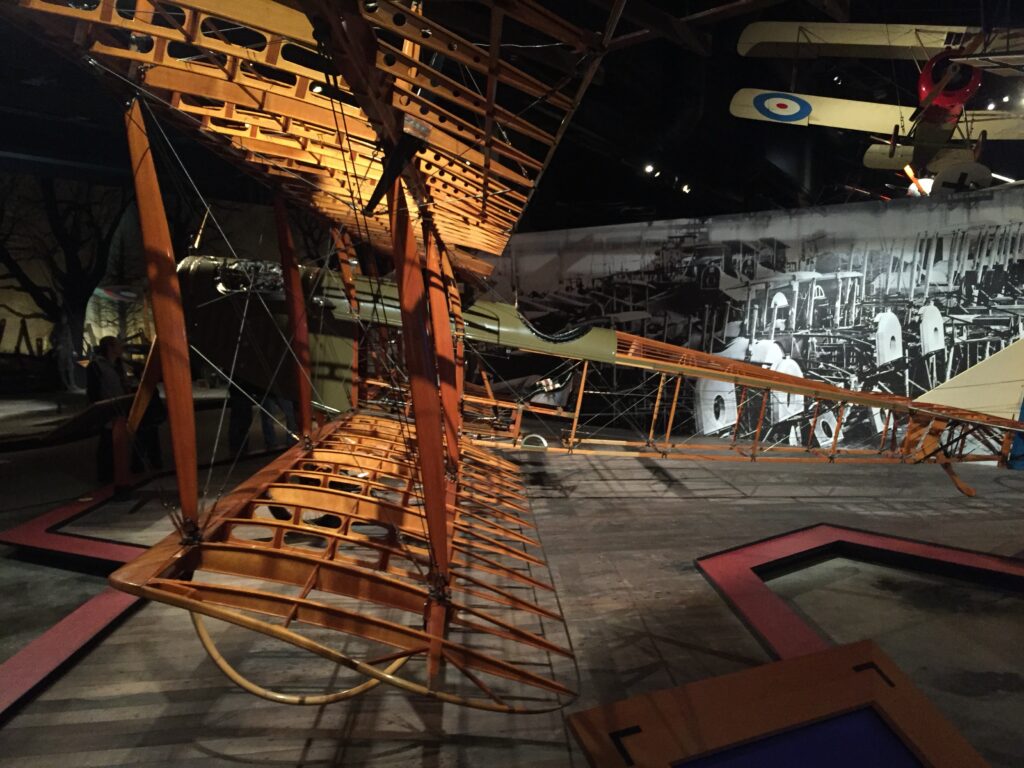



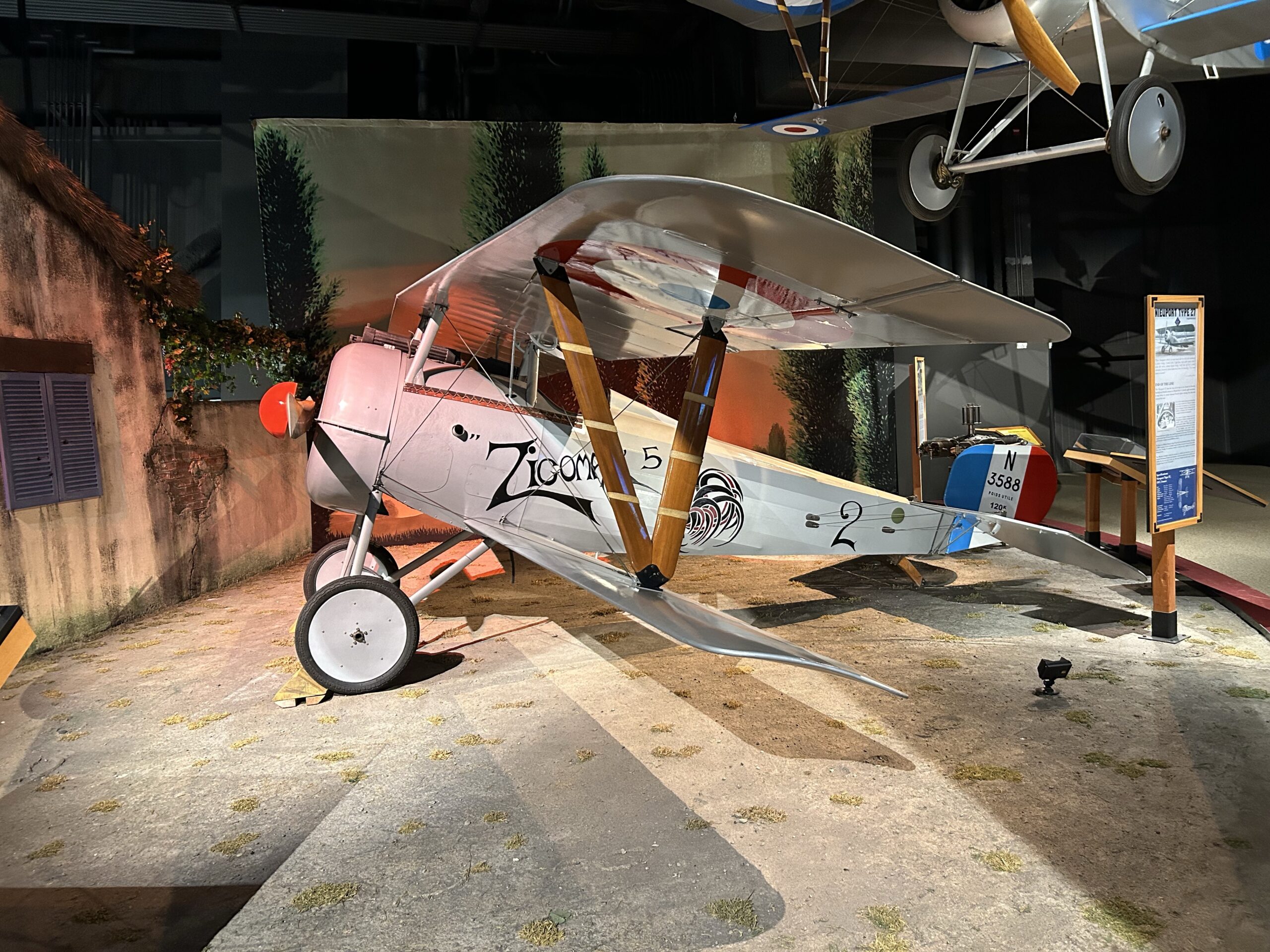





U.S. Army
- The Army operates a diverse fleet of rotary-wing aircraft, including the AH-64 Apache attack helicopter, UH-60 Black Hawk utility helicopter, and CH-47 Chinook heavy-lift helicopter.
- The Army also operates a small number of fixed-wing aircraft for reconnaissance, transport, and other support roles, such as the C-12 Huron and RC-12 Guardrail.
- Army aircraft are primarily used for air assault, air cavalry, attack, reconnaissance, and logistics support missions.
- As of 2022, the Army had approximately 4,400 manned and unmanned aircraft in its inventory.

U.S. Marine Corps
- The Marine Corps operates a mix of fixed-wing and rotary-wing aircraft, closely integrated with naval operations.
- Fixed-wing aircraft include the F-35B Lightning II, AV-8B Harrier II, and KC-130J Hercules for close air support, aerial refueling, and transport.
- Rotary-wing aircraft include the AH-1Z Viper attack helicopter, UH-1Y Venom utility helicopter, and CH-53E Super Stallion heavy-lift helicopter for assault support, transport, and other missions.
- As of 2022, the Marine Corps had approximately 1,200 manned and unmanned aircraft in its inventory.
So while each branch has its own unique aviation capabilities tailored to its roles and missions, all branches of the U.S. military operate aircraft as a critical component of their overall force structure and operational capabilities.

















